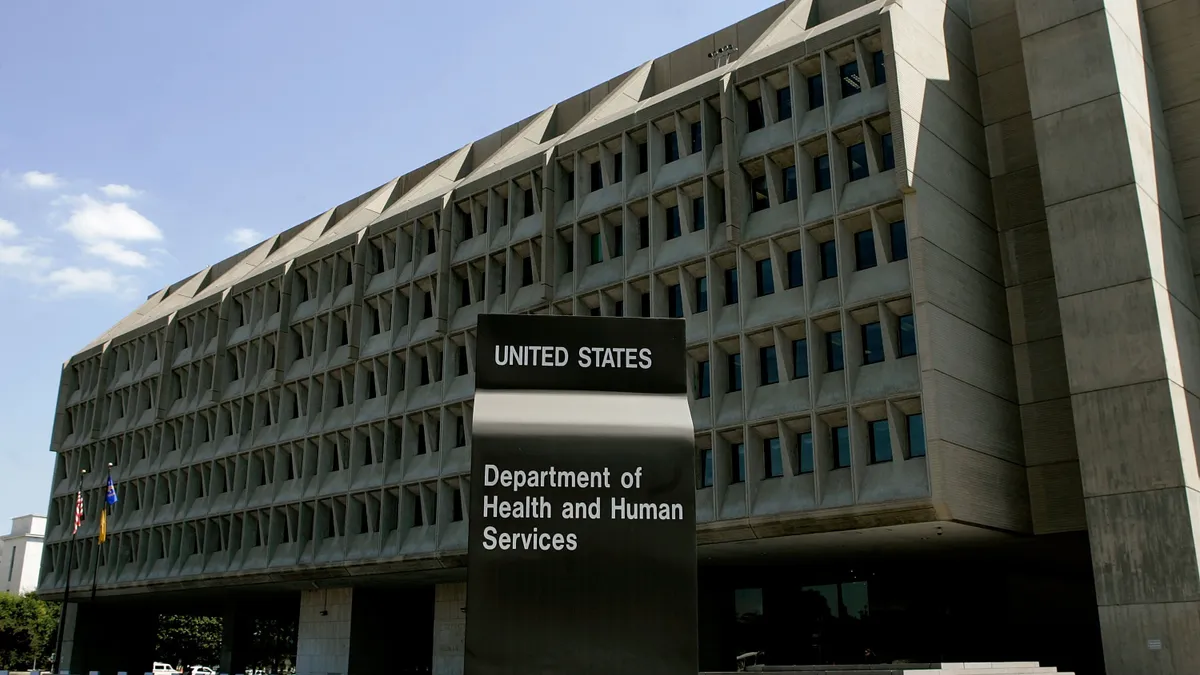Dive Brief:
- The U.S. Department of Health and Human Services plans to invest in fields including artificial intelligence, robotics and test kit research in a push to make the public health supply chain more resilient.
- HHS' update sets out the situation one year after President Biden tasked the department with finding ways to strengthen the supply chain in light of the pressures put on it by the COVID-19 pandemic.
- The department wants to lower the cost of diagnostic starting components and make them more interchangeable to increase test availability. HHS' plans for medical devices center on production technologies, the identification of untapped domestic capacity and ways to sustain demand.
Dive Insight:
The first phase of the coronavirus pandemic was marked by shortages of personal protective equipment (PPE) and durable medical equipment (DME), as well as limited access to COVID-19 diagnostics. Those supply problems hindered the effort to control the spread of the virus. HHS wants to ensure the U.S. is better prepared for the next pandemic.
"These challenges highlighted pre-existing issues in the public health supply chain and industrial base, such as the lack of on- or near-shore manufacturing and sourcing for raw materials and finished medical products. Unless the U.S. Government takes action to create a more resilient public health supply chain, we may experience similar disruptions during a future public health emergency," the department wrote in its report.
HHS' report lists its current and planned supply chain initiatives in areas including PPE, DME and testing. To improve the availability of PPE and DME, the department is incentivizing domestic raw materials production of nitrile butadiene rubber, and other key chemicals for gloves, gowns and surgical masks. The goal is to onshore or near-shore production capacities.
Specific aspects of the strategy include investment in "artificial intelligence, robotics, and automated assembly practices and technologies (e.g., shelf-life extension) for existing manufacturers." Targets of the investment include "extruders for increasing production of man-made fibers and computer numerical control/robotic automation assets for sewing and finishing gowns, and advanced humanlike headforms to expedite respirator development timelines."
HHS also plans to work with industry to find unused domestic manufacturing potential or strategies to spread end-to-end risk across manufacturers, and to explore ways to stimulate and sustain demand for domestic products, for example by increasing stockpile inventory and establishing a revolving fund for Strategic National Stockpile with "Buy American" provisions.
The department is tackling diagnostic supply from different angles. HHS wants to bring down the cost of test kits by lowering the price of starting components, and to improve the shelf-life of reagents to ensure materials remain usable for longer. Other goals include increasing the interchangeability of non-patented test components to boost the volume of common parts and reduce spot shortages.
HHS said the government will continue to invest in COVID-19 testing capacity. The plan is to "prioritize warm-base production capacity that will allow test, component, and reagent suppliers to quickly scale up production during surges in demand." The term "warm base" refers to sites that can quickly make products in response to a pandemic or other public health crisis.
The actions described by HHS are part of a broader effort to identify and fix supply chain vulnerabilities. Analysts at Cowen said "there will likely be further legislative and administrative actions," in a Friday note to investors.
"We continue to believe a strict requirement that drugs be made in the U.S. is unlikely. Instead, a far more limited list of drugs — largely generics, as well as more easily manufactured PPE like masks and ventilators — could be given priority over those made in foreign countries for purchase by the VA and DoD as well as for the Strategic National Stockpile," the analysts wrote.












